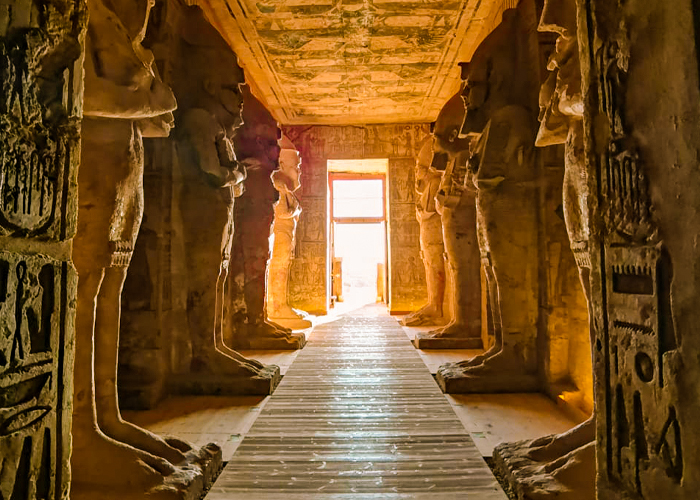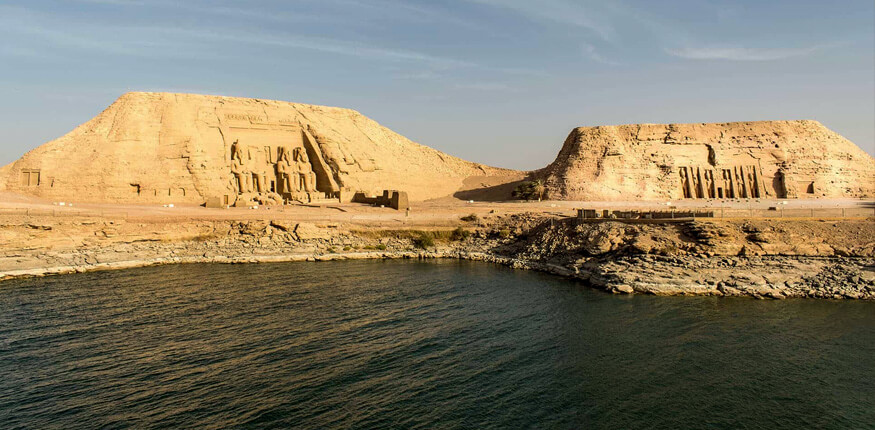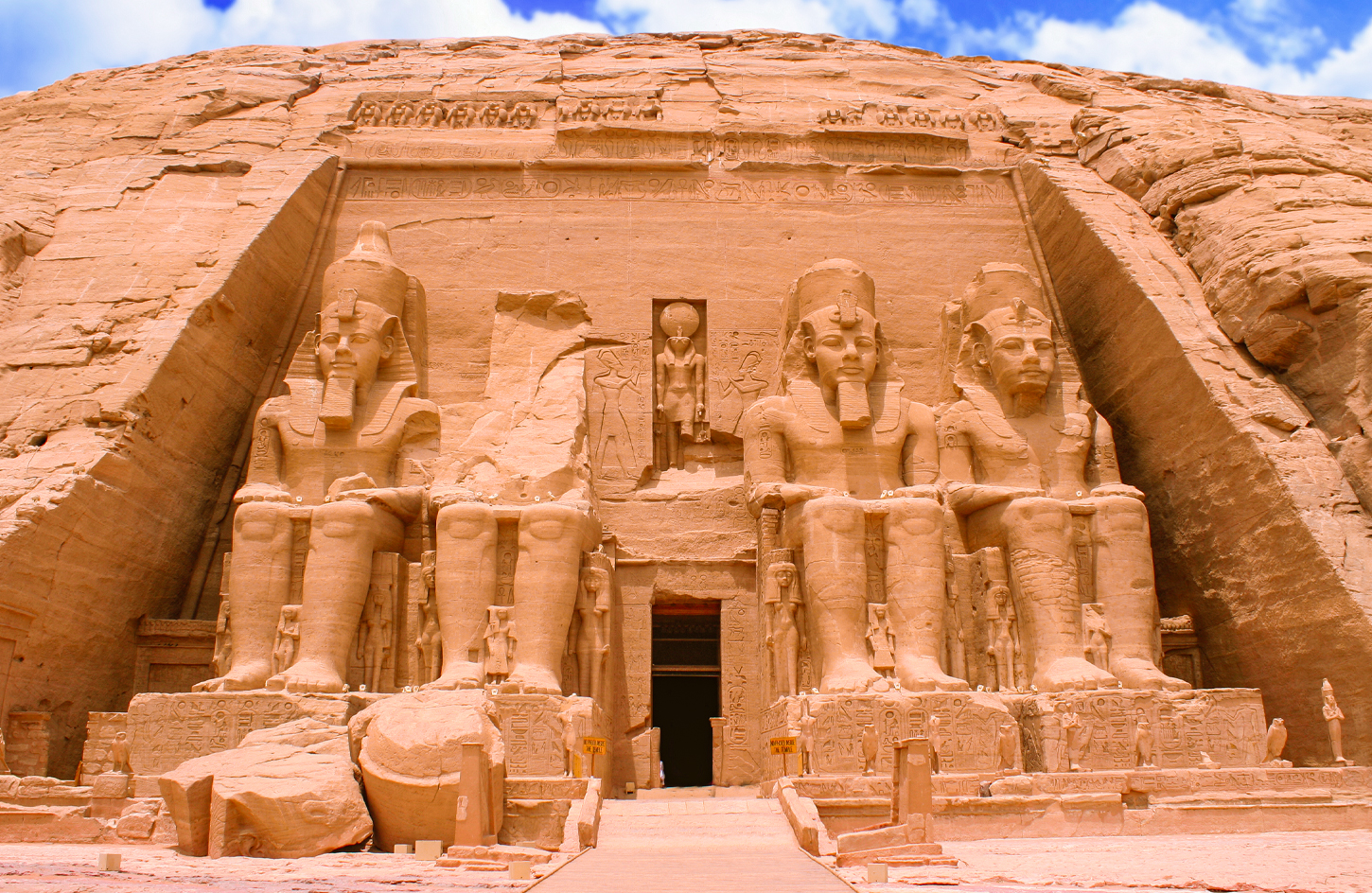The magnificent site of Abu Simbel is located deep within the Nubian desert of southern Egypt. This historic complex is well-known for its enormous temples and intriguing history. It is set into the sandstone cliffs along the west side of Lake Nasser. Together we will discover what makes Abu Simbel one of Egypt’s most amazing archeological finds in this exploration.
A Glimpse into History of Abu Simbel
Abu Simbel comprises two gigantic temples carved out of rocks by Pharaoh Ramses II during the thirteenth century BC. These monuments were constructed to revere the gods Ra-Horakhty, Amon-Ra and Ptah. While simultaneously celebrating Ramses’ own godly status; they are outstanding examples of ancient Egyptian architecture and art.
It was originally located on the river bank Nile. The temples were moved in 1960s onto higher grounds so, that they would not go under when Lake Nasser was built following the construction of Aswan High Dam. The remarkable engineering feat was also a product of international collaboration aimed at saving these irreplaceable historical treasures.

The Great Temple of Ramses II
The Great Temple, otherwise called the Temple of Ramses, is more popular than the others. There are four gigantic statues of Ramses II at the front. These impressive figures, representing a hoary god-like pharaoh, guard the entrance to this holy place carved from rock.
The temple has a massive hypostyle hall with eight oversized pillars, that are covered in highly detailed reliefs depicting Ramses II’s military victories, religious rituals and divine aspects. By far the most amazing thing within it is how its inner chamber’s arrangement allows for two times every year – on February 22nd and October 22nd – sunlight to stream through illuminating statues of Ramses II as well as making them visible in the inner room where there are seated gods. It is thought that this event marks both when he was born and when he was made kin
The Temple of Hathor and Nefertari
The Temple of Hathor and Nefertari is dedicated to goddess Hathor and the late queen Nefertari, beloved to Ramses II. Although smaller than the other temples, its six statues lining the wall are quite impressive. Four stand for Ramses II while the other two represent Nefertari. The interior of the temple is adorned with vibrant hieroglyphics and reliefs that highlight the queen’s divine status and her role in worshiping Hathor. Her significant status and reverence are further emphasized by its detail that even Nefertari’s statues are depicted almost equal in size as those of Ramses II.

A magnificent example of the architectural prowess and religious zeal of ancient Egypt is Abu Simbel. Its enormous statues and elaborately designed interiors serve to both illustrate the Egyptian civilization’s enduring legacy. And to convey the majesty of Ramses II’s reign. Abu Simbel offers an incredible trip back in time, displaying the eternal magnificence of one of Egypt’s finest pharaohs, whether you’re a history buff or just a casual traveler.
For more information, join us on a private day tour of Abu Simbel from Aswan. Book now and live the adventure.



0 Comment